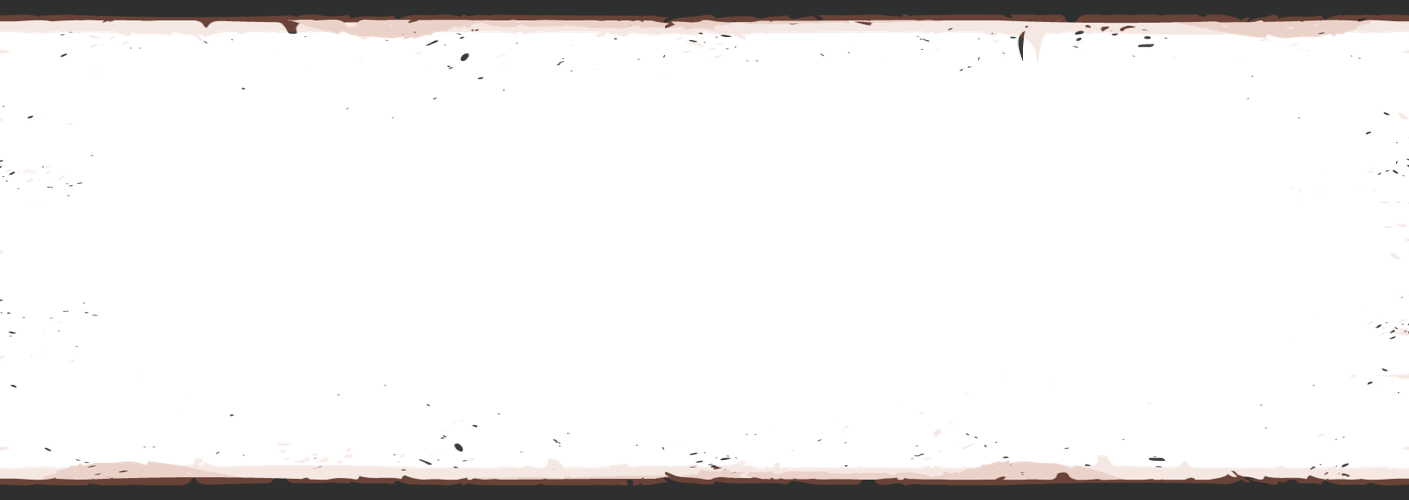Nitshill’s War Heroes
Nitshill experienced sad changes with the outbreak of WWI as the village was stripped of its young men, some of whom then perished. Many of those losses are registered on the local war memorial, which is sited at the bottom of the entrance to Nitshill Railway Station. According to research, one in six of those men who enlisted won honours, with 31 awarded either the Victoria Cross, the Military Cross or the Distinguished Conduct Medal.
Friends of Nitshill War Memorial, a local constituted voluntary group, is currently researching the history of many of the brave men listed on that memorial stone and are gathering information about Nitshill’s war dead whose names have yet to be added to the monument. You can learn more about their discoveries as they emerge by viewing the ‘Friends of Nitshill War Memorial’ Facebook page. Alex Glass, chairperson of the group, has kindly shared with us extracts from the Friends’ database.
Sergeant John Meikle, V.C.
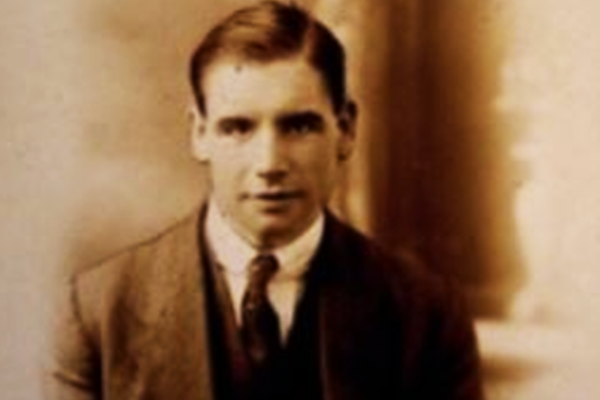
Large families, such as the Law clan from Nitshill, are known to have suffered many losses. Some families continued to lose relatives due to wartime injuries, this included individuals like former head teacher and first president of the Nitshill and Hurlet Bowling Club, John Patterson, who died from his wounds two and a half years later. One name that is fairly well known in Nitshill is that of Sergeant John Meikle, who was the recipient of the highest British medal of honour – the Victoria Cross.
John Meikle was born on 11th September 1898 at 34 Freeland Place, Kirkintilloch. He was the second (eldest surviving) son of John Meikle Snr and his second wife Annie Meikle (née Hollywood). John's first wife, Jane, died after giving birth to a daughter who survived. Records state that young John was the fifth of 12 children born to the Meikles. Four of his siblings died in infancy and only three of them lived beyond the age of 30. The family moved to Nitshill in 1901, shortly after John Meikle Snr's employer, Perry & Hope's Forth and Clyde Chemical Works, moved its factory to the village in 1900-01. Now living in No.1 Office Row, Nitshill, Glasgow, John completed his education at Levern Public School and attended Pollokshaws Primitive Methodist Chapel. He was known as a popular lad who enthusiastically supported the local junior team, Royal Victoria FC, and often acted as their hamper boy. In 1913, he became a clerk at Nitshill Station, on the Glasgow, Barrhead & Kilmarnock Joint Railway.
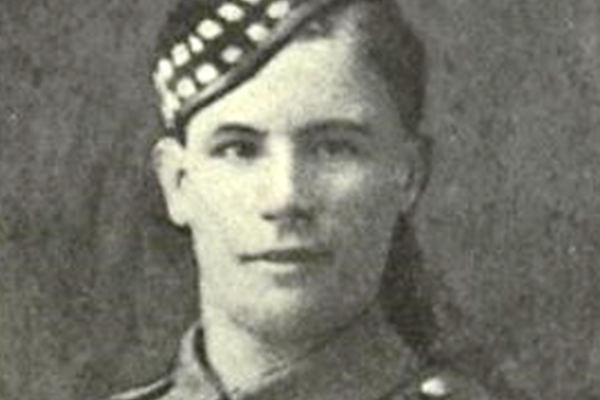
On 8th February 1915, when he was only sixteen years of age, young John Meikle left his job at the station, lied about his age, and enlisted with Glasgow’s Seaforth Highlanders in Maryhill (No. 200854) to fight in the Great War. An estimated 250,000 ‘boy soldiers’ under the age of 18 signed up to fight in the Great War. Meikle's personal military service record, along with many others, was destroyed in an air raid during the Second World War. However, researchers have managed to piece together the following account of John’s military life:
During his time in barracks as he waited to be sent to France, he was trained on how to use the Lewis Gun, a weapon he became highly proficient with and on the 30th July 1916, he was sent to join his battalion in France, taking part in the attacks on High Wood, The Battle of the Ancre and he was promoted to Corporal. His time with the frontline unit was short lived after he was wounded by a bayonet and was withdrawn from front line duty for a period before he could re-join them. He served in the Battle of Arras in April 1917, where the battalion captured numerous enemy trenches and took many prisoners, and then took part in the fighting of 1917, including the First and Second Battles of the Scarpe, the capture and defence of Roeux, and the Battle of Pilkem Ridge and the Battle of Menin Road Ridge, both part of the Third Battle of Ypres. It was during the Battle of Menin Road Ridge, that Meikle was awarded the Military Medal for his bravery and leadership near Langmarch . During the battle, Meikle was wounded again and this time sent back to hospital in Glasgow to recover from his injuries.
While in Nitshill in November 1917, he was presented with a gold watch on behalf of his fellow villagers in the local public hall. The watch, engraved with his initials, remains with the family as a treasured heirloom and when Meikle returned to France, he had been promoted to Sergeant. It is recorded that he would always carry a heavy walking stick wherever he went and he took it onto the battlefield with him but when he left home to return to the Front, his sister realised that he had forgotten his stick and ran to the local railway station to reunite it with him.
The Second Battle of the Marne was the turning point for the Allies in the War, and by the 20th July 1918, Meikle and his unit, No 2 Company, 1st/4th Battalion, were with the 154th Brigade, 51st (Highland) Division in the French Aisne-Marne Sector, to defend the Ardre Valley. In the early afternoon, the 1st/7th Argyll & Sutherland Highlanders, also of the 154th Brigade, moved forward alongside the 1st/4th Seaforth’s, and both units were heavily engaged by enemy machine guns which held up the British progress. At 4:30pm, the enemy launched a counter-attack, which was beaten back by the British troops, but two hours later a very heavy bombardment began to fall around Rectangle Wood and prevented the 154th Brigade reaching their objectives and suffering heavy casualties."
(Source: ‘Great Wars VCs’ Facebook)
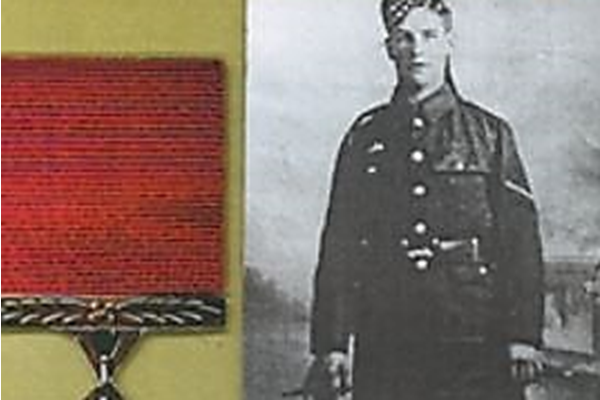
Young John Meikle lost his life that day, but no before completing acts of the highest bravery, leading to him being posthumously awarded the Victoria Cross. When the fighting had ended, Meikle’s comrade, Company Sergeant Major G W Sturrah, who was himself only twenty-three years of age, wrote to Meikle's mother Annie, and explained the circumstances surrounding her son’s death:
It is with the deepest regret that I write to you to inform you of your dear son 200854 Sgt Meikle, J, of his death, (killed in action) on the 20th July. We were on this day attacking a strong enemy position, and your dear lad behaved as gallantly as ever Britisher did. He single-handed knocked out an enemy machine gun post and its crew. Knocking out with a walking stick he always used to carry and was afterwards rushing another similar post when he was killed by Machine Gun fire. His death was instantaneous."
(Source - www.firstworldwarglasgow.co.uk)
His citation reads:
For most conspicuous bravery and initiative when his Company, having been held up by machine gun fire, he rushed single handed a machine gun nest. He emptied his revolver into the crews of the two guns and put the remainder out of action with a heavy stick. Then, standing up, he waved his comrades on. Very shortly afterwards another hostile machine gun checked progress, and threatened also the success of the company on the right. Most of his platoon having become casualties, Sgt Meikle seized the rifle and bayonet of a fallen comrade, and again rushed forward against the gun crew, but was killed almost on the gun position. His bravery allowed two other men who followed him to put this gun out of action. This gallant non-commissioned officer's valour, devotion to duty, and utter disregard of personal safety was an inspiring example to all."
Source: London Gazette, 13th September 1918.
The Meikle family could not afford the combined expenses of new clothes and accommodation in London and were therefore unable to attend the official presentation of John’s VC at Buckingham Palace. Instead, they received the decoration during a local parade at Maryhill Barracks on the 28th October 1918, where the medal was presented to John Meikle Snr., by General Sir FWN McCracken KCB, DSO, General Officer Commanding Scottish Command, at Maryhill Barracks, Glasgow on 28 October 1918. Young John’s mother, Annie, later donated funds from her son's VC pension and soldiers’ pay to two local churches.
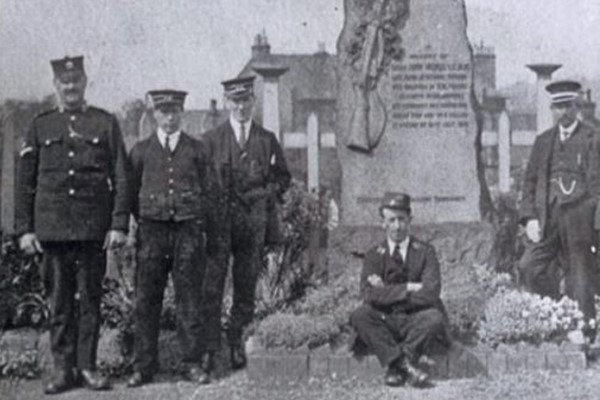
In 1920, John Meikle’s former colleagues erected a seven-foot granite memorial to his memory outside St. Enoch’s Station, Nitshill, which was unveiled by a Lady Lorimer. The memorial was moved in 1971, after fears about vandalism and re-erected outside Dingwall Station, and unveiled by a Mr. Simon Caldwell, who had fought alongside Meikle
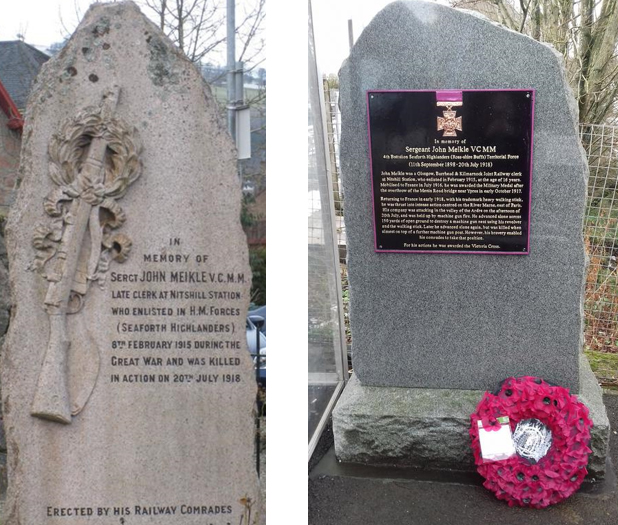
Right: A new memorial stone was unveiled at Nitshill Station in 2016.
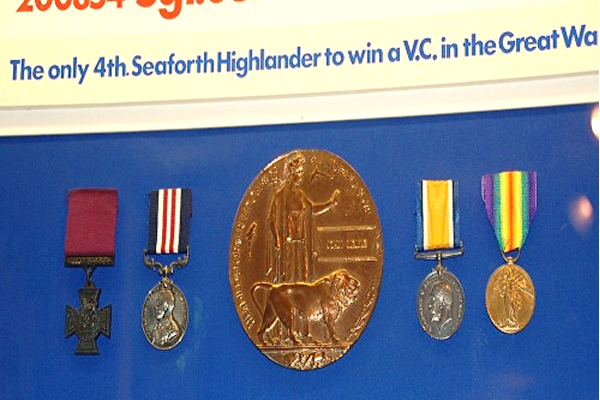
In November 1972, John’s family presented his medals to the 1st/4th Seaforth Highlanders Reunion Club; the club decided to put the medals on public display in the Military Room at Dingwall Museum, Scotland. The artefacts include John’s Victoria Cross and Citation, Military Medal, British War Medal 1914-1918, and his Victory Medal 1914-1919. A bronze memorial erected to John in Nitshill public hall and subsequently moved to Levern Primary School, is also now in Dingwall Museum.
In 1992, Dingwall Museum Trust published John’s story: 'Portrait of a Soldier – Sgt John Meikle VC MM, 4th Battalion Seaforth Highlanders, 1898-1918'.

There is a headstone to John Meikle VC in the Commonwealth War Graves Commission Cemetery at Marfaux - Plot VIII, Row C, Grave 1.
John Meikle, VC, is the only Scottish railway employee to have received this award for valour. Of the 628 crosses awarded during the WWI, only twenty-five went to men under the age of twenty.
